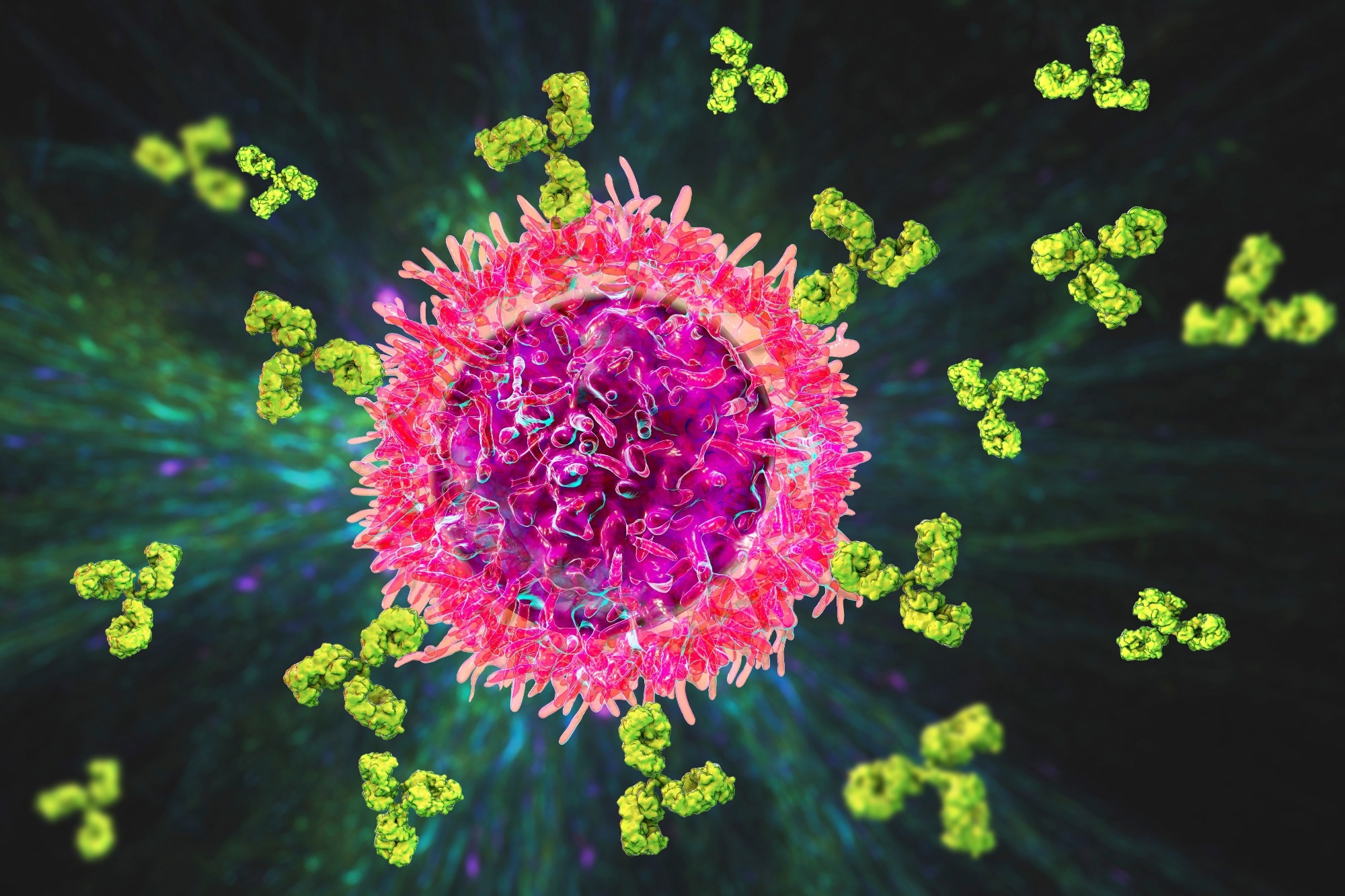Home » Health News »

In a recent study published in the journal PLOS Pathogens, researchers used computational simulations and experiments with murine models to investigate how genetic variations encoded in the germline impact B-cell responses and understand variations in individual responses to vaccines and infections.

Background
Although the evolution of the immunoglobulin genes that encode B-cell receptors, which are secreted antibody precursors, has occurred over millions of years, these genes also undergo recombination within an individual’s lifetime to give rise to a diversity of naive B cells that can bind to a wide range of antigens.
The expanded lineage of B cells that originates from this diverse repertoire subsequently undergo affinity maturation, where they gain somatic mutations that improve their ability to bind to a specific antigen. The protective range and abilities of these affinity-matured B cells are determined by the antigen sites they target, as well as the lineage sizes.
The sequence of amino acids in the B-cell receptor region determines the affinity of the B-cell receptor for an antigen, and is therefore, dependent on the germline recombination of the genes that code for immunoglobulins, and the somatic mutations that occur in these genes within the lifetime of an individual.
However, specific epitopes are hardcoded into individual alleles and could have arisen through the selection of a by-product of the diversification of the immunoglobulin gene.
About the study
In the present study, the researchers investigated the role of genetic variations in the germline that result in differing responses to antigens to understand the underlying causes for individual differences in responses to vaccinations and infections.
They carried out computational simulations where the size of the advantages encoded by the germline variations relative to the effect size variation and rate of somatic mutations determined the similarities in allele usage in different individuals.
Although large advantages encoded by the germline result in greater similarities across individuals in allelic usage, affinity maturation influenced by the stochasticity of the evolutionary process can result in significant divergence in responses to infections or vaccines over time.
Therefore, to evaluate the strength of germline-encoded advantages in shaping the repertoire of B-cells, they compared the frequencies of germline alleles in a population of responding or activated B-cells and in a repertoire of naive B cells. This ratio of frequencies would indicate the proportion of B-cell lineages that used the germline allele as compared to lineages that use other alleles.
If the use of a specific allele results in higher initial affinity for the antigen or the affinity developed through affinity maturation is higher for some lineages than others, the allele would have ratio of a greater than one across individuals.
In contrast, if specific germline alleles result in poor growth rates of B-cells or are more dependent on the variations arising from recombination events, the usage of germline alleles by successful lineages of B-cells will vary across individuals. Therefore, the correlations between individuals in the frequency ratios of germline alleles of experienced-to-naïve populations would determine the role played by the germline-encoded specificities in B-cell responses.
Results
The results from the computational simulations showed that the responses to antigens displayed persistent or transient similarities based on the advantages of the germline variation and the hardcoded antigen specificity of the immunoglobulin genes.
Relative to the somatic mutations, if the advantage offered by the germline alleles was greater, the B-cell responses across individuals were dominated by B-cells with specific alleles. However, if the advantages due to germline variations were weaker, the B-cell responses across individuals would vary according to the somatic mutations over time, despite the similarities in the initial responses.
The results from an experimental set-up where the researchers compared the simulated dynamics with mouse models that were infected with the influenza virus and sacrificed at different time points to study their B-cell responses also showed similar patterns.
When the germline-encoded advantages were weaker, the allele usages across individuals became increasingly divergent due to subsequent somatic mutations, with no evidence for affinity maturation acting as a selective force or leading to a convergent amino acid sequence or motif.
Conclusions
Overall, the findings suggested that while the selection of specific motifs on the immunoglobulin genes might determine similarities in the B-cell responses across individuals, high-affinity antibodies are a result of diverse evolutionary paths, which decreases the predictability of B-cell responses to antigens, and therefore, to vaccination and infections.
Furthermore, understanding the factors that influence the differential use of similar or contingent alleles in the antibody repertoire could help understand how immunoglobulin genes have evolved over evolutionary time.
- Vieira C, Palm AE, Stamper CT, et al. (2023). Germline-encoded specificities and the predictability of the B cell response. PLOS Pathogens, 19(8), e1011603-. doi:10.1371/journal.ppat.1011603. https://journals.plos.org/plospathogens/article?id=10.1371/journal.ppat.1011603
Posted in: Medical Science News | Medical Research News | Disease/Infection News
Tags: Allele, Amino Acid, Antibodies, Antibody, Antigen, B Cell, Cell, Evolution, Frequency, Gene, Genes, Genetic, Germline, Immunoglobulin, Influenza, Receptor, Virus
.jpg)
Written by
Dr. Chinta Sidharthan
Chinta Sidharthan is a writer based in Bangalore, India. Her academic background is in evolutionary biology and genetics, and she has extensive experience in scientific research, teaching, science writing, and herpetology. Chinta holds a Ph.D. in evolutionary biology from the Indian Institute of Science and is passionate about science education, writing, animals, wildlife, and conservation. For her doctoral research, she explored the origins and diversification of blindsnakes in India, as a part of which she did extensive fieldwork in the jungles of southern India. She has received the Canadian Governor General’s bronze medal and Bangalore University gold medal for academic excellence and published her research in high-impact journals.